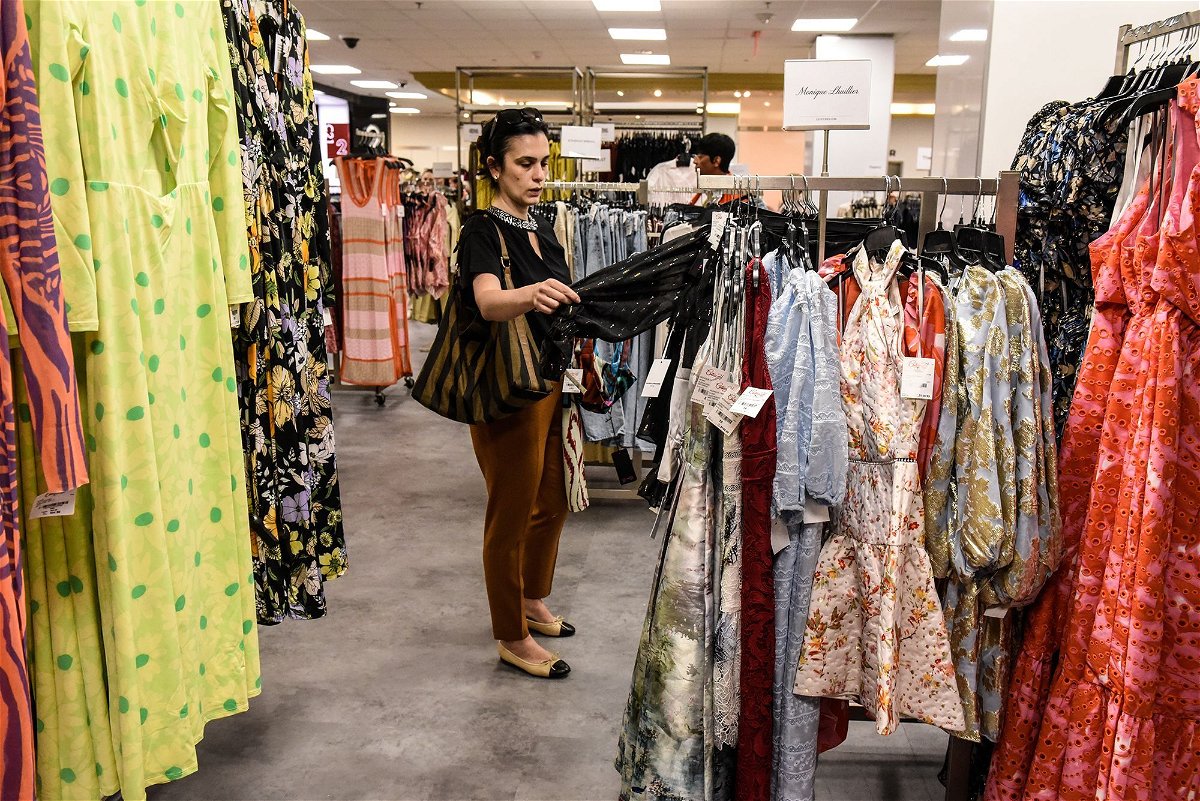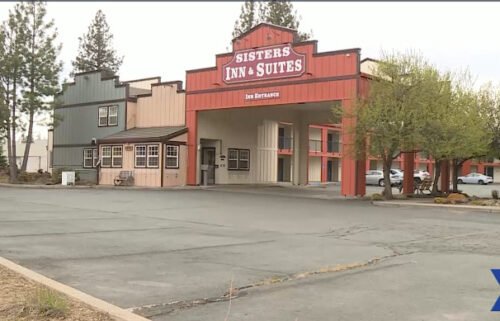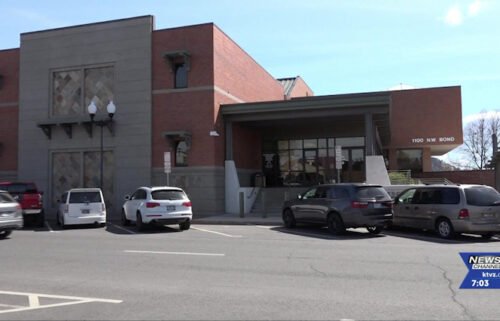The US economy grew stronger than expected in the second quarter, but consumers are pulling back

A customer during the grand re-opening of a Century 21 department store in New York
By Bryan Mena, CNN
Washington (CNN) — The US economy picked up steam in the second quarter despite punishing rate hikes and still-high inflation, the Commerce Department reported Thursday.
Gross domestic product, the broadest measure of economic output, grew by an annualized, seasonally adjusted 2.4% rate in the April-through-June period. That was a faster pace than in the first three months of the year and was also above economists’ expectations for a 1.8% rate, according to Refinitiv. GDP is also adjusted for inflation.
Economic growth in the second quarter was driven by business investment, government purchases, inventory investment and consumer spending, though at a much weaker pace than in the first quarter.
Consumer spending, which accounts for about two-thirds of economic output, grew at just a 1.6% rate in the second quarter, down sharply from a 4.2% rate in the first three months of the year. That was driven by a sharp pullback in spending on durable goods, which are products such as cars and washing machines meant to last at least three years.
Nonresidential business investment rose sharply to a 7.7% growth rate in the second quarter, up from a 0.6% rate in the beginning of the year. That uptick was mostly thanks to spending on equipment, which jumped to 10.8% from -8.9%.
The slowdown in consumer spending reflects cooling demand, which the Federal Reserve has been trying to achieve through a series of aggressive rate increases. After hiking its benchmark lending rate by a quarter point this week, the Fed will likely view the GDP report in a positive light.
But the report also underpins resilience in the economy, which could give the Fed enough leeway to roll out yet another hike this year.
“The Fed is looking at consumer spending slowing down as a sign that the economy is cooling, so I think they will take some comfort from these slower numbers since the Fed wants to push growth below potential,” Lydia Boussour, a senior economist at EY-Parthenon, told CNN.
Spending is weaker — but the labor market is still strong
Even though spending cooled from the robust pace earlier in the year, it hasn’t fallen off a cliff — thanks to employers still hiring and real wage growth finally picking up.
Employers added 209,000 jobs in June, a weaker gain than in the prior month, but still robust by historical standards. Americans’ paychecks are also finally beating inflation, with US workers’ real weekly earnings growing in June for the first time in 26 months.
“In terms of what’s driving consumers’ ability to spend, rather than relying on stimulus and and stocked-up savings or cash that they accumulated throughout the pandemic, now, that tight labor market is translating into real income gains as inflation slows, which I think is a important tailwind for spending,” Shannon Seery, an economist at Wells Fargo’s Corporate and Investment Bank, told CNN.
Seery said consumers have also “shifted their spending patterns in terms of their actual consumption,” which was reflected in consumers cutting back on durable goods purchases in the second quarter, specifically cars and parts. Economists say the shift in spending toward services from goods is still underway.
The fate of spending largely hinges on the state of the labor market. So, if employers continue to churn out jobs, and wages continue to grow as inflation slows, then consumers will still have healthy purchasing power. It remains to be seen whether the Fed can successfully defeat inflation without seeing a deterioration in the labor market — but so far, both spending and hiring have abated slightly and gradually.
Business spending is dragging on growth
Business spending — known as nonresidential fixed investment — rebounded strongly in the second quarter as businesses invested more on equipment and structures. Investment in structures has been propped up in recent quarters because of fiscal stimulus that Congress passed, such as the infrastructure bill passed in 2021 and the CHIPS and Science Act passed last year.
Manufacturers’ spending on construction rose a staggering 76.3% in May from a year earlier, after steadily rising in the months before. Economists say that uptick is directly tied to those bills Congress passed. The GDP report showed that spending on structure slowed to a 9.7% rate in the second quarter from a 15.8% rate in the prior one.
GDP in the second quarter was dragged down by a steeper decrease in exports compared with imports, and was weighed down by a continued decline in residential fixed investment, which broadly reflects conditions in the housing market. But the housing market has so far had a much weaker drag on economic output in the first half of this year compared to the second half of 2022.
“The housing market, after being the primary drag on growth, will likely move back into contributing to growth in the second half of the year, even as consumers slow down a bit, so there will likely be a bounce back in the third quarter,” said Diane Swonk, chief economist at KPMG, in an interview.
New home sales fell 2.5% in June from the prior month, following a surge of 6.6% in May, as buyers continued to rely on new construction as an alternative to the historically low supply of existing homes for sale.
What could happen if the economy restrengthens
Investors took comfort in the latest GDP figures because it means the Fed’s aggressive tightening campaign hasn’t thrown the economy into a downturn just yet.
“Thursday’s better-than-expected second-quarter GDP print is supportive of the soft landing scenario, as it’s clear that the Federal Reserve has yet to cause a recession even after its many rate hikes over the past year, and inflation is coming down, which is the exact outcome investors were hoping for,” wrote Carol Schleif, chief investment officer at BMO Family Office, in an analyst note.
American consumers and businesses are indeed feeling much better about the economy and the potential for inflation to come down to a level they’re familiar with. Investors have also grown bullish about the Fed’s chances of pulling off a soft landing, a scenario in which inflation comes back down to the 2% target without a recession, and they’re even confident the Fed is done raising rates.
Financial markets see a 76% chance that the Fed will decide to hold rates steady at its September meeting, according to the CME FedWatch Tool.
There’s now a growing possibility that not only could the economy skirt a recession, but it could also pick up steam this year, which could stall inflation’s defeat. That would mean additional action from the Fed.
“At the margins, stronger growth could lead over time to higher inflation and that would require an appropriate response for monetary policy,” Fed Chair Jerome Powell said in a post-meeting news conference after the Fed’s decision Wednesday.
The-CNN-Wire
™ & © 2023 Cable News Network, Inc., a Warner Bros. Discovery Company. All rights reserved.



